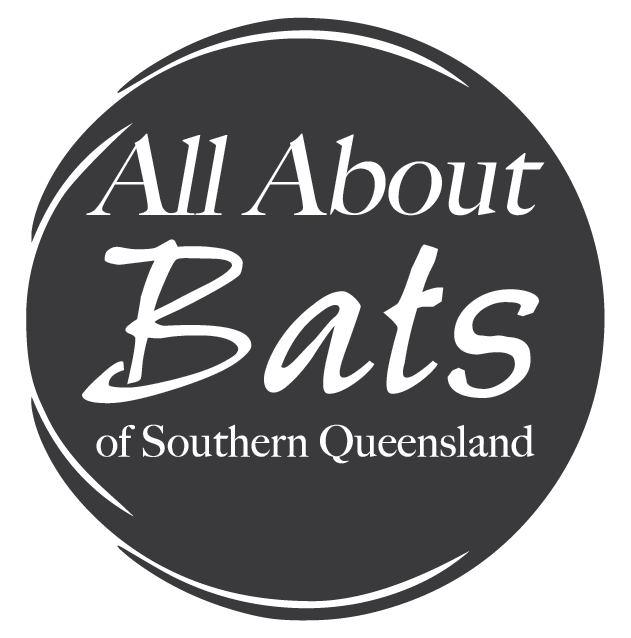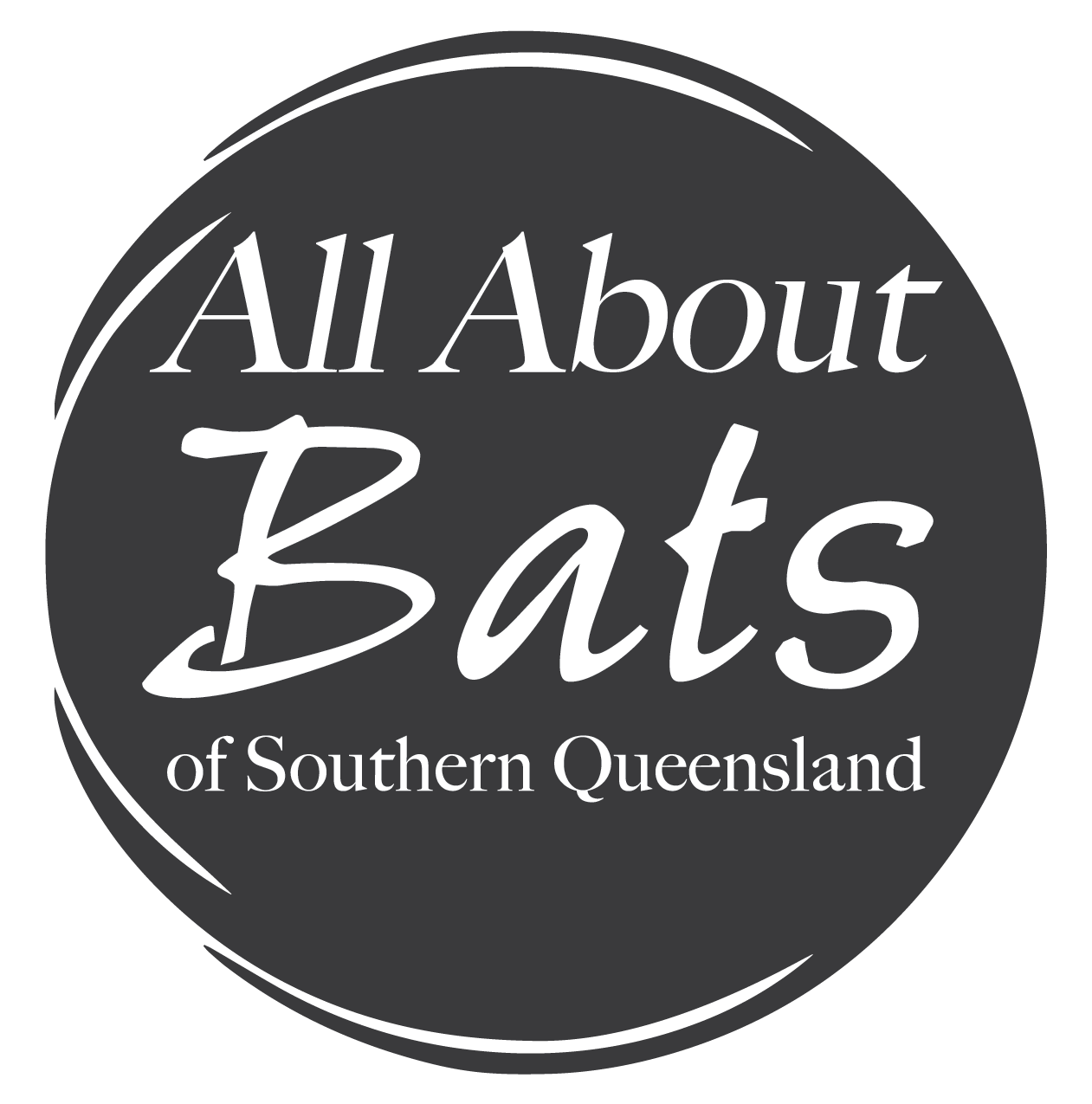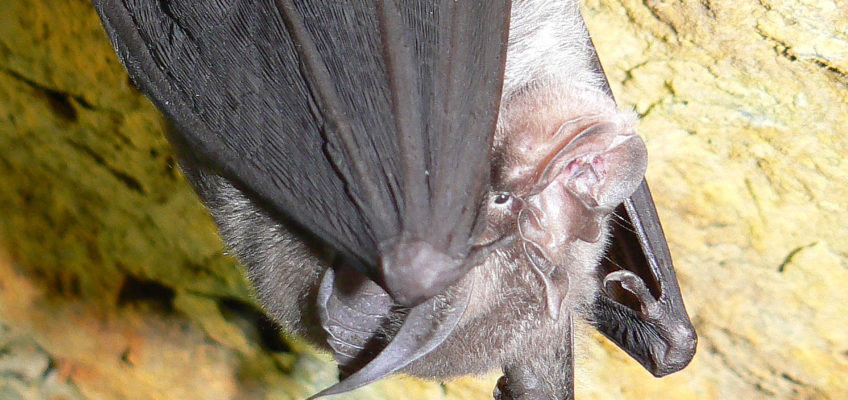Rhinolophus megaphyllus
The eastern horseshoe bat has generally greyish brown fur with pale tips and this stays the same throughout their lives. Some Queensland populations have bright orange fur, but this colour can change depending on their age and sex.
Conservation Status
This species is listed as Vulnerable in Queensland.
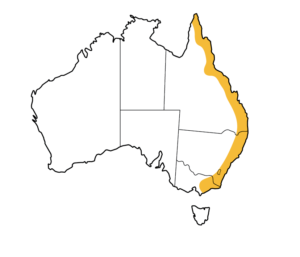 Habitat
Habitat
Found along the eastern coastline, these bats are cave dwellers and reside mostly in caves or old mine shafts near coastal scrub, woodland, forest and rainforest. Their short, broad wings allow them to forage close to the ground, even hover. Moths are their primary food source and they will take their prey to a temporary roost while they eat.
Breeding
One young is born in October to November. Females will return to the same maternity roost every year.
Predators and Threats
Feral cats, foxes, pythons, hawks and owls. Loss of old mines and caves, wildfires.
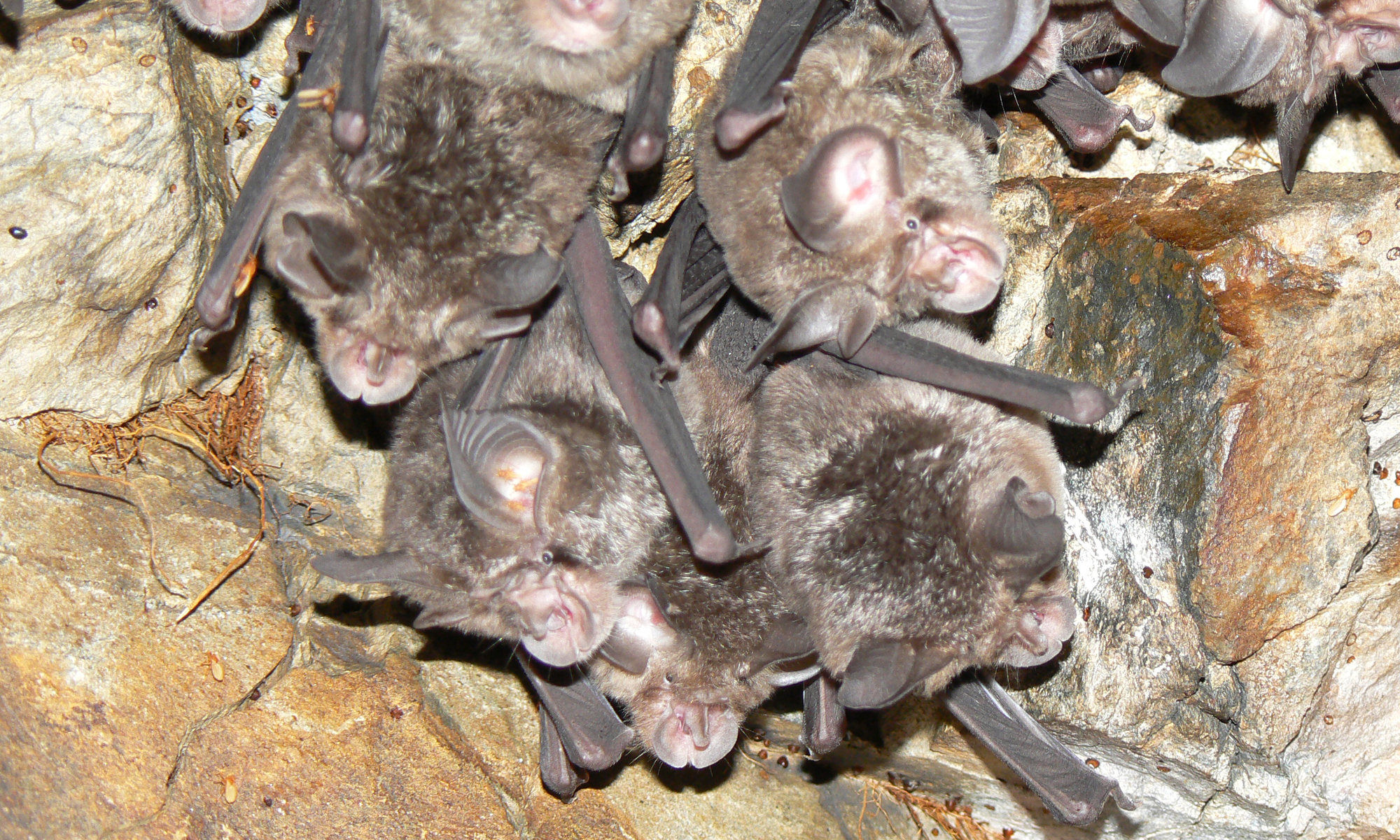
Photos: Les Hall
Sources:
Churchill, S. (2008) Australian Bats (2nd Edition). Allen and Unwin, Sydney.
Hall, L. (2009) Bats, A Wild Australia Guide. Steve Parish Publishing, Queensland.
Atlas of Living Australia
